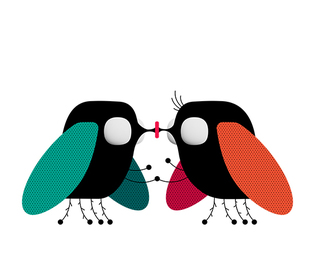
Alex Eben Meyer
In sub-Saharan Africa, tsetse flies spare no one. They bite both animals and humans, spreading parasites that cause debilitating diseases in both. But when Shimaa Ebrahim, a postdoctoral fellow at Yale, started studying these insects, she noticed another strange behavior: they were very eager to mate. She put two tsetse flies in a test tube together, and in five seconds, they got straight down to business. “I had never seen this kind of behavior before,” Ebrahim says.
In a recently published study led by Ebrahim, her team dissects the complex cocktail of chemicals that tsetse flies use to woo their partners—a cocktail that humans may one day use against the flies themselves.
The researchers extracted chemicals from the flies and found that one chemical was particularly potent. Called methyl palmitoleate (MPO), its scent not only attracted male flies, but also, when a piece of black yarn was knotted to look like a fly and doused in MPO, male flies would land on the decoy and linger for an hour. When a different species of fly was perfumed with MPO, male tsetse flies would try to mate with it. The researchers also noticed that flies carrying disease-causing parasites released different chemicals and made females much less interested in mating.
John Carlson, a biologist at Yale and senior author of the study, thinks the results may improve tsetse control measures. For example, MPO might make more attractive tsetse traps, which his team is currently testing with collaborators in Kenya. Ebrahim is studying 21 chemicals found in infected flies to figure out which ones deter mating and might help keep tsetse numbers low.
Stemming the growth of tsetse populations is particularly urgent now, says Carlson, because global warming is creating more warm, wet places where these flies thrive. Outbreaks can be catastrophic for people who rely on their livestock for food and farming. He says that’s partly why he expanded the focus of his lab from that traditional subject, the fruit fly: “A lot of what we learned in the fruit fly can be translated into understanding insects that are important in the real world.”
 loading
loading